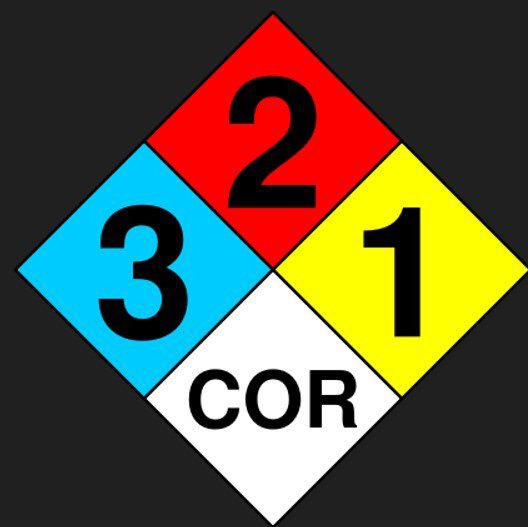NFPA-National Fire Protection Association Diamond
NFPA Diamond is a simple, readily recognizable and easily understood marking given by NFPA.
It gives general idea of material-hazard, severity of hazard and relate to fire prevention, exposure and control.
It provides additional value or information in case of fire.
NFPA Diamond is divided in four category based on identification of hazard of substance;
1. Blue for health hazard.
2. Red for fire hazard.
3. Yellow for instability hazard.
4. While for specific hazard.
Each color printed with 0 to 4 number rating (In five divisions from 0 to 4).
Let us see one by one;
1. Blue – Health Hazard
Position: First from left in top and first in line system.
It is health hazard rating and indicates degree of hazard.
4-Deadly.
3-Extreme Danger.
2-Hazardous.
1-Slightly Hazardous.
0-Normal Material.
2. Red – Fire Hazard
Position: Second from left in top and second in line system.
It is flammability ratings and indicates susceptibility to burning.
Flash Point;
4-Below 73 degree Fahrenheit, Will burn easily and rapidly at room temperature/pressure, Ignite spontaneously when exposed to air, Very flammable.
3-Below 100 degree Fahrenheit, Will ignite at room temperature and will burn rapidly.
2-Below 200 degree Fahrenheit, Will ignite if moderately heated.
1-Above 200 degree Fahrenheit, Will ignite if preheated.
0-Will not burns.
3. Yellow-Instability Hazard
Position: First from right in bottom and Third in line system.
It is instability ratings and indicates energy released if the material is burned, decomposed or mixed.
4-May detonate under normal condition.
3-May detonate with shock or heat, reacts explosively without heating or confinement.
2-Violent chemical change, reacts violently or forms potentially explosive mixture but does not detonate.
1-Unstable if heated, changes or decomposes on exposure to light, moisture or air.
0-Normally stable and not react with water.
4. White-Specific Hazard
Position: Second from right in bottom and fourth in line system.
It is special hazard symbols; it is reserved for additional information which may be of value to fire fighter.
Oxy-Oxidizer- it may not burn itself, but may ignite and will intensify burning of combustible material.W-No water usage, material reacts with water may become explosive, may produce flammable or poisonous material or may produce excessive heat, etc.
SA-Simple Asphyxiant- It may displace the normal oxygen level.
ACID– As name suggest acid.
ALK-As name suggest alkaline nature.
COR-Corrosive.
Radiation symbol.
Let us take an example to decode it;

As per image, lets interpret it.
3 in blue means it is extremally hazardous,
2 in red means below 200 degree Fahrenheit and it will ignite if moderately heated.
1 in yellow means it is unstable if heated, changes or decomposes on exposure to light, moisture or air.
COR in white means it is corrosive substance.
Thanks for reading.

